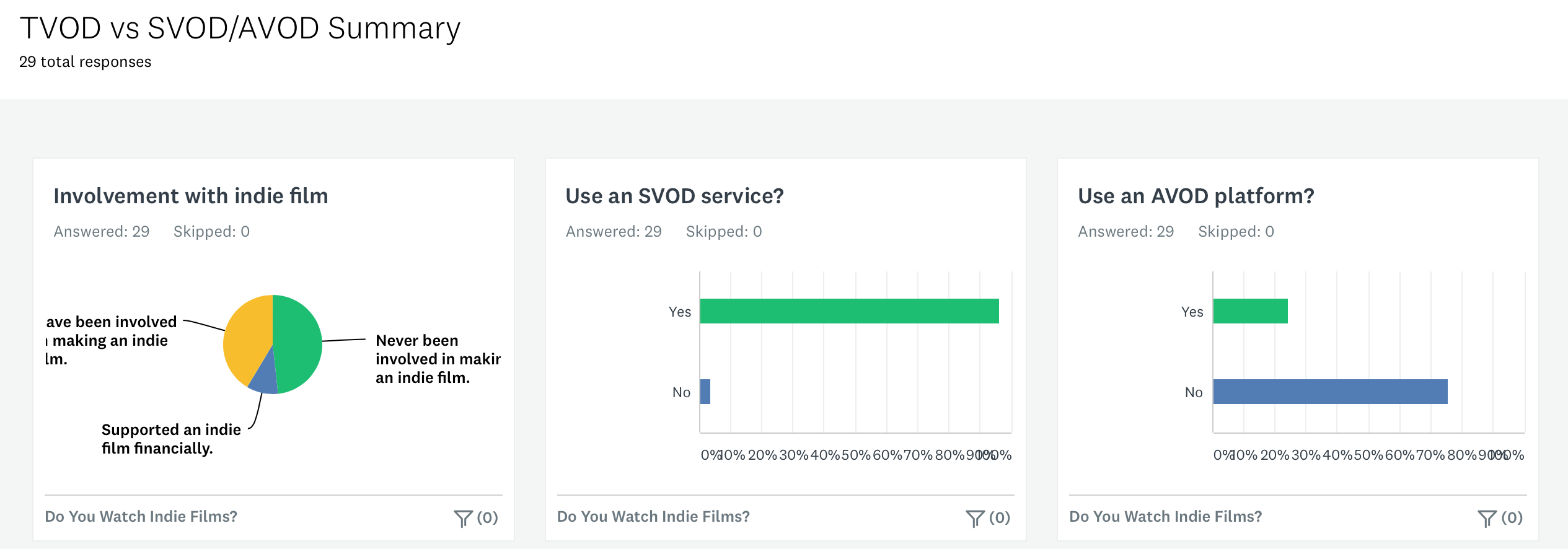Trying to make back the money it costs to produce an independent film is hard.
People expect entertainment for free. Really, I should say “free” instead. Nothing is free, but it’s not normally something people pay for at the time of consuming the entertainment. They pay a monthly (Netflix, Hulu) or annual (Amazon) fee, but when they sit down to watch a movie or show, there’s no transaction. Youtube is free, social media is free, even TV is free, if you don’t count paying for cable or satellite, or dealing with advertising.
Studios spend millions on overcoming this expectation. It takes a big amount of interest to trigger someone buying a movie instead of just “netflixing” it. And, I have found, it takes a lot of interest to trigger the purchase or rental of an indie documentary.
My film has been in the TVOD window, or Transactional Video On Demand window- meaning people who want to watch it must buy or rent it. I’m considering when to move to the next widow, which is SVOD and AVOD, or Subscription VOD or Advertising Supported VOD. It’s a big decision because the difference in margins is pretty large. In TVOD the split between platform and filmmaker ranges from 50-90%, depending on platform. Amazon Video is 50%. So if you rent a movie for $2, the filmmaker gets $1. Amazon Prime royalties are paid by the amount of time watched. And that royalty varies based on a number of factors Amazon calls an engagement score.
Given its current engagement score on Amazon, my documentary would generate $0.05 per hour of streamed video. (Max possible is $0.10) So, I would be making right at $0.08 per viewing of my entire film. (If someone watches part of it, then the royalty will be adjusted.) That means to make more money from SVOD/Prime than rentals ($1) I would need to have my film viewed 12 times on Prime vs rented one time.
Sounds crazy right? How can anyone expect a movie to be viewed 12 times as much as it is rented just by making it available to Prime subscribers?
Part of my issue is that most of the initial rush of purchases have already happened. People who already know about the movie have already decided to buy or rent it. To generate more rentals or purchases I have to introduce someone to the movie and then get them interested enough to spend money on the transaction. I have to trigger someone to overcome their expectation of free entertainment. Opening the SVOD/AVOD window could bypass that, but will it generate revenue?
So, I did a little survey among my friends. These are people I can easily reach through organic means (not paid) on social media and email. I asked 5 simple questions. There was a definite trend.
I should mention this is far from a perfect or scientific survey. It’s a snapshot of what people I know think about watching independent films. It’s also a bit skewed by the number of filmmakers who are included in the survey, so keep that in mind when reading the results. I will break that down a bit more as the article goes on.
29 total responses.
Survey results with filmmakers included:


29 responses. 3 people had give money toward a crowdfunding campaign for film. 12 had been in or helped make a film. 14 had never been involved with film before.
96.5% use an SVOD service like Netflix, Amazon or Hulu.
75% did not use an AVOD platform, like Crackle or Tubi.
65% said they either had or were willing to spend money an indie film (TVOD)
27% said the either had or were willing to watch an indie film on a “free” streaming platform. (SVOD/AVOD)
92% are open to watching your movie, if they are interested.
75% said they would rather watch an indie film on SVOD/AVOD.
Then I took out all of the filmmakers in the survey, leaving 17 responses.

53% said they either had or were willing to spend money an indie film (TVOD)
41% said the either had or were willing to watch an indie film on a “free” streaming platform. (SVOD/AVOD)
94% of these non-filmmakers are open to watching your movie, if they are interested enough. (That’s up 2% from when looking at the responses with filmmakers included… Weird)
76% said they would rather watch an indie film on SVOD/AVOD.
OK, so what does that mean?
Not a lot of people watch AVOD. Almost everyone has an SVOD service.
A lot of people say they will buy or rent an indie film, if they are interested enough. But in both versions of the survey, basically 3/4 say they would prefer to watch it through SVOD/AVOD. That makes sense, right? I’m already paying for the subscription, it’s easy to just add it and watch.
So while more than half are willing to consider spending money on your movie, it’s always going to be easier to get people to watch in SVOD. And, especially among friends and family, you can capture those TVOD transactions early.
Bottom line: After the initial rush of purchases by your committed fans, open the film up to SVOD. This should trigger the next level of fans, who might watch but are hesitant to pay money to watch.






